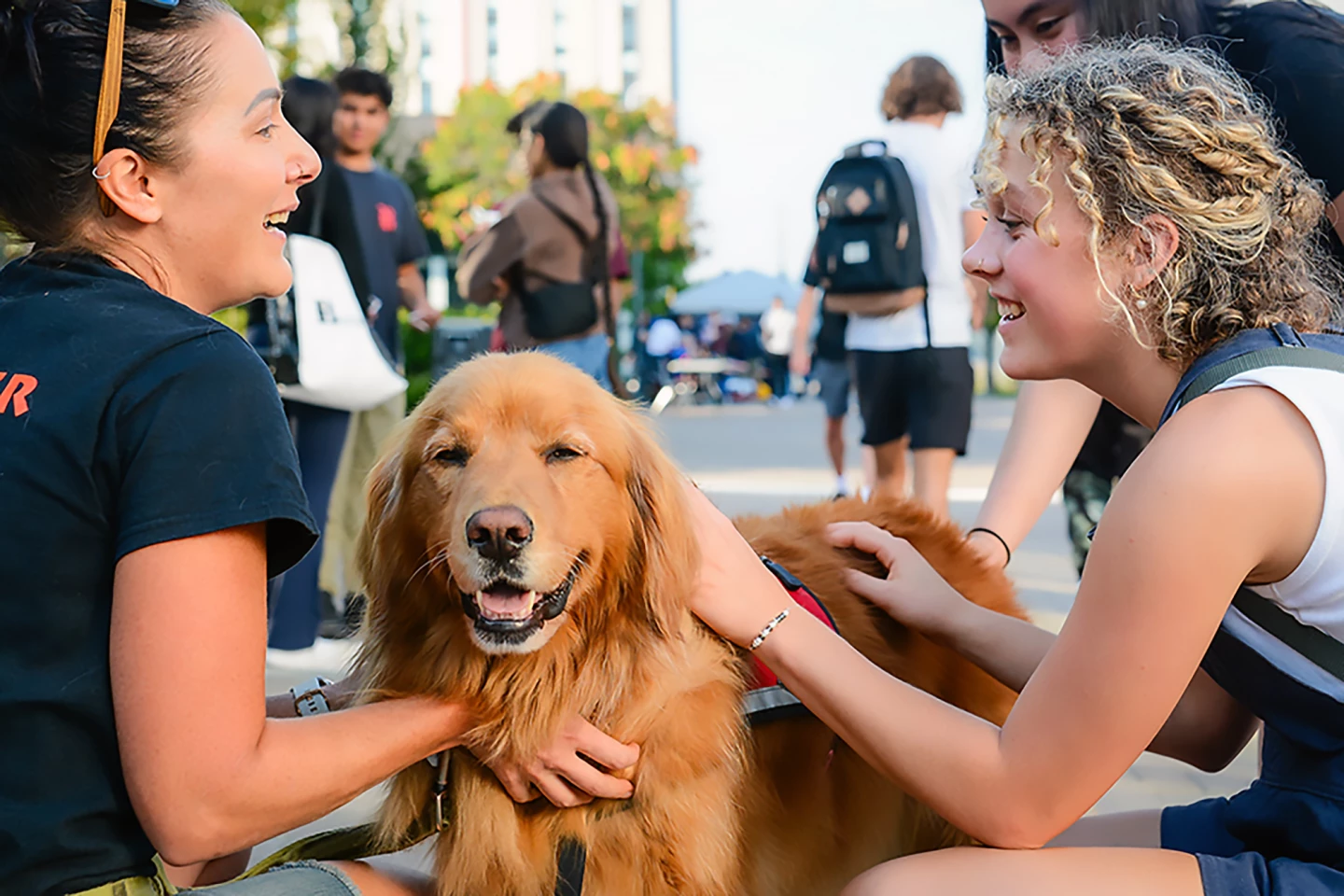Watching a video of a therapy dog for just five minutes can meaningfully lower stress levels, a new study shows, offering a simple, stigma-free option for those reluctant to seek traditional mental health support.
We’ve covered how dogs can boost physical and mental health, especially in people who are suffering from loneliness. Well, a new study has shown that it might not be necessary to own an actual dog to reap the health benefits of its companionship.
Led by researchers from the University of British Columbia’s Okanagan campus (UBCO) and Brock University, a new study has found that exposure to a virtual dog can also improve well-being by reducing stress, regardless of age.
“Our findings demonstrate that even with a virtual session, there was a significant reduction in stress among both the student population and the general public, regardless of age,” said co-author John-Tyler Binfet, PhD, Director of UBCO’s Building Academic Retention through K9s (BARK) program. “This suggests that virtual canine comfort modules are an effective, low-cost and accessible resource for those seeking mental health supports.”
The study was inspired by a need to increase accessibility to therapy dogs, which became apparent during the COVID-19 pandemic and its social restrictions. So, those involved in the BARK program created “virtual canine comfort modules,” which feature a pre-recorded video from a BARK therapy dog and their handler engaging in calming, dog-centered activities for five minutes.
The study had two parts. During the first phase, 963 college or university students (mean age 21) watched one of four five-minute pre-recorded videos featuring therapy dogs. During phase two, 122 adults from the general community, with a mean age of 41, did the same. Participants rated their stress using a visual analog scale (VAS), from one (“not stressed at all”) to five (“very stressed”). The question the researchers sought to answer was: Can this simple, virtual experience actually make people feel less stressed?

They found that stress decreased significantly for both groups after watching the short video. For the student participants, average stress scores went from 3.33 to 2.53, indicating a large effect. For general public participants, the effect was moderate; their scores fell from 3.07 to 2.43. Women experienced greater stress reduction than men, though both benefited. Age didn’t impact the degree of stress relief among students.
The study suggests that even very short, low-cost, virtual interventions like these can have a real, positive impact on stress. The videos are easy to access (they’re available online, no scheduling is needed), low-barrier (there is no talking, no therapy sessions, no stigma), and appeal to a broad range of people, including those who might be reluctant to seek help for their mental health. This makes it a practical “first step” for people struggling with stress who might otherwise not reach out for support.
There are some important limitations to the study. There was no control group comparing dog videos to other types of calming content, such as nature videos or videos without dogs, so it’s hard to know if it was the dogs that made the difference. The researchers only measured immediate stress reduction and did not provide information on whether the benefits lasted in the medium or long term. Most participants were women – 80% in the student group, 72% in the non-student group – making it harder to generalize the findings to men or gender-diverse populations. The single-item stress scale was very simple and might not capture the full picture. And, the fact that all the dog handlers were female may have influenced how participants related to the video content.
Despite its limitations, the study’s findings suggest that mental health professionals, universities, and communities could use these kinds of videos as a complement to more formal treatment, a bridge while people wait for therapy, or a first step for those who are hesitant to seek help. Additionally, the content could be customized for different audiences, including LGBTQ+ individuals, people with disabilities, and individuals with social anxiety or trauma.
The study was published in the journal Human-Animal Interactions.
Source: UBCO






